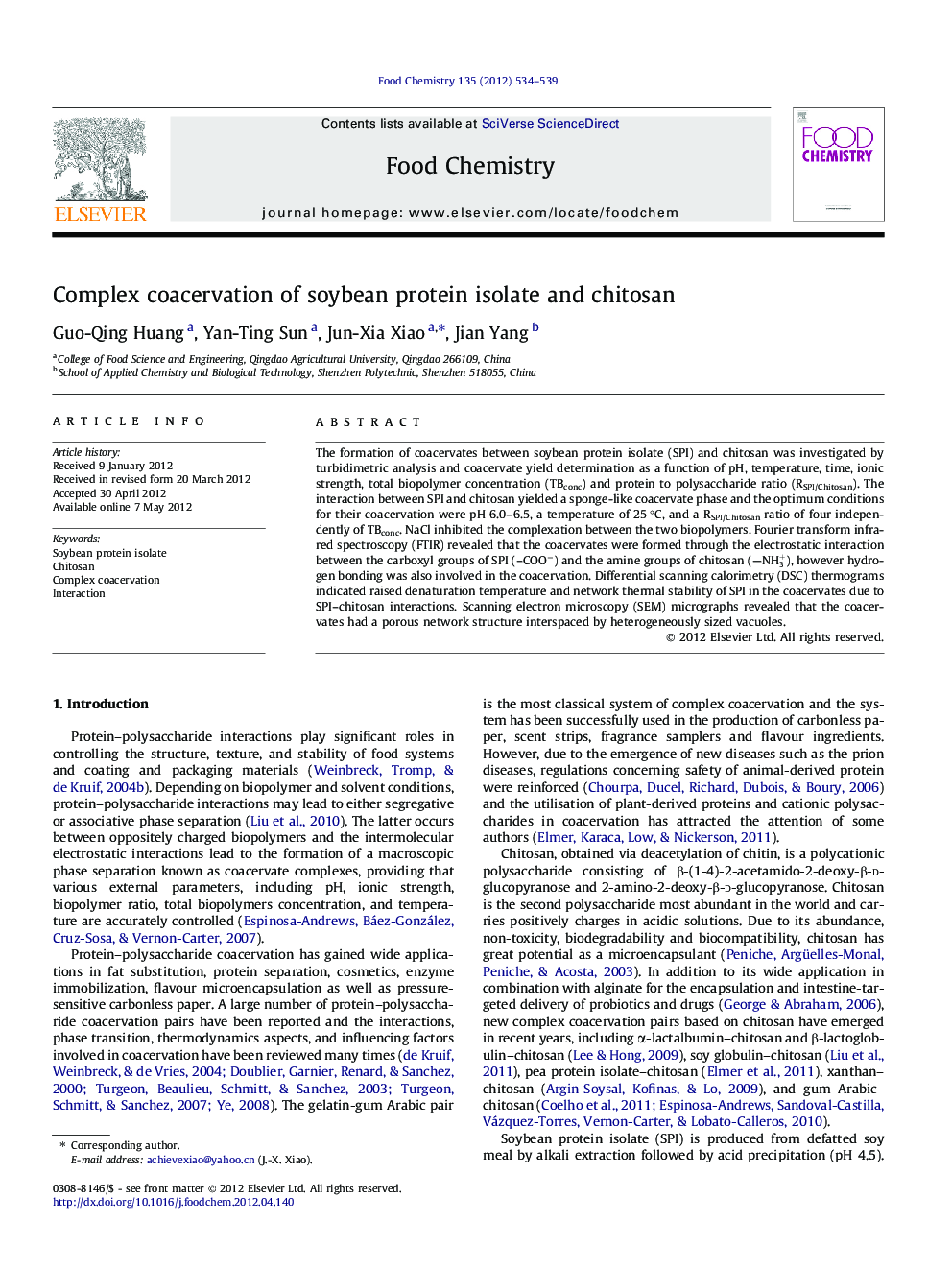| Article ID | Journal | Published Year | Pages | File Type |
|---|---|---|---|---|
| 1185766 | Food Chemistry | 2012 | 6 Pages |
The formation of coacervates between soybean protein isolate (SPI) and chitosan was investigated by turbidimetric analysis and coacervate yield determination as a function of pH, temperature, time, ionic strength, total biopolymer concentration (TBconc) and protein to polysaccharide ratio (RSPI/Chitosan). The interaction between SPI and chitosan yielded a sponge-like coacervate phase and the optimum conditions for their coacervation were pH 6.0–6.5, a temperature of 25 °C, and a RSPI/Chitosan ratio of four independently of TBconc. NaCl inhibited the complexation between the two biopolymers. Fourier transform infrared spectroscopy (FTIR) revealed that the coacervates were formed through the electrostatic interaction between the carboxyl groups of SPI (–COO−) and the amine groups of chitosan (–NH3+), however hydrogen bonding was also involved in the coacervation. Differential scanning calorimetry (DSC) thermograms indicated raised denaturation temperature and network thermal stability of SPI in the coacervates due to SPI–chitosan interactions. Scanning electron microscopy (SEM) micrographs revealed that the coacervates had a porous network structure interspaced by heterogeneously sized vacuoles.
► Chitosan coacervates with ultrasonic-exposed SPI in pH 5.5–6.5. ► SPI–chitosan coacervate is sponge-like. ► SPI–chitosan coacervation occurs mainly through electrostatic interaction. ► SPI–chitosan coacervate provides vacuoles for the inclusion of foods.
